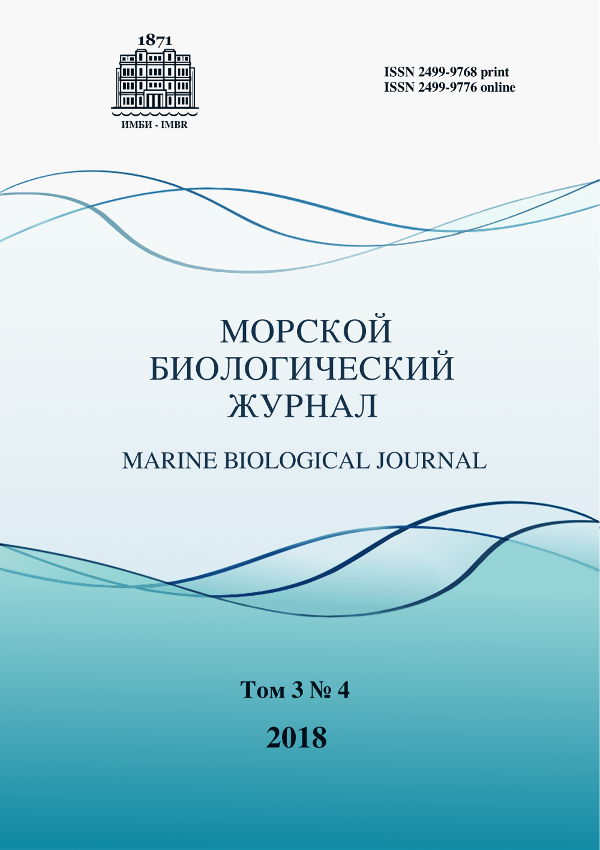Taxonomic status of Flexopecten glaber ponticus (Bucquoy, Dautzenberg & Dollfus, 1889) – the Black Sea Flexopecten glaber (Linnaeus, 1758) (Bivalvia: Pectinidae)
##plugins.themes.ibsscustom.article.main##
##plugins.themes.ibsscustom.article.details##
Abstract
The name Flexopecten glaber ponticus (Bucquoy, Dautzenberg & Dollfus, 1889) is generally used for the only Pectinidae representative inhabiting the Black Sea. It is registered in the Red Book of the Republic of Crimea as endemic subspecies reducing in amount. F. glaber ponticus is listed in WoRMS MolluscaBase as the only accepted subspecies of Flexopecten glaber (Linnaeus, 1758). In the past its taxonomic status has been changed from a geographic variety to valid species. The purpose of this study is to establish its correct taxonomic status. The study is based on a comparative analysis of conchological features of Flexopecten glaber and F. glaber ponticus in relation with the brief natural history of population in the Black Sea. Sampling was performed by snorkel equipment in Kazach’ya Bay (Black Sea, Crimea, Sevastopol) at 2–6 m depths. A total of 100 scallop specimens were sampled in September 2017. To assure a better understanding in a broader context those results are compared with the previously published morphological data based on the analysis of a large amount of material from the Black Sea and the Mediterranean Sea – Marmara Sea regions. Comparative analysis of conchological features of F. glaber ponticus from the Black Sea with F. glaber from the Mediterranean region has not revealed any distinct differences between them. Thus, there are no evidenced data for the diagnosis of F. glaber ponticus as a subspecies. Species F. glaber appeared in the Black Sea not earlier than 7,000 years ago and formed a well developed population less than 3,000 years ago. We have to conclude that the specified divergence period is not long enough to form a subspecies. As a result of the present survey the subspecific status of F. glaber ponticus is not retained and the name is placed in synonymy of the parent species Flexopecten glaber.
Authors
References
Bondarev I. P. Main features and stages of the Black Sea ecosystem formation in the Late Pleistocene-Holocene. Geologiya i poleznye iskopaemye Mirovogo okeana, 2012, no. 2 (28), pp. 53–71. (in Russ.).
Bondarev I. P. The dynamics of leading species of the recent facies in the Black Sea. Geologiya i poleznye iskopaemye Mirovogo okeana, 2013, no. 3 (33), pp. 78–93. (in Russ.).
Bondarev I. P. Dynamics of the Black Sea belt benthic biocoenosis and its connection with the Earth’s planetary and solar cycles. In: From the Caspian to Mediterranean: Environmental Change and Human Response during the Quaternary. 2013 : Proceedings of IGCP 610 First Plenary Conference and Field Trips. Georgia, Tbilisi, 12–19 Oct., 2013 / A. Gilbert, V. Yanko-Hombach (Eds). Tbilisi : Ltd “Sachino”, 2013, pp. 53–55. http://eprints.iliauni.edu.ge/3497/1/Proceed.IUGSPr.%23610.pdf.
Bondarev I. P. Dynamics of Rapana venosa (Valenciennes, 1846) (Gastropoda: Muricidae) population in the Black Sea. International Journal of Marine Science, 2014, vol. 4, no. 3, pp. 42–56. http://dx.doi.org/10.5376/ijms.2014.04.0003.
Bucquoy E., Dautzenberg P., Dollfus G. Les mollusques marins du Roussillon. T. II. Pélécypodes. Avec Atlas de 99 planches en phototypie. Paris, 1887–1898, 884 p.
Imsiridou A., Karaiskou N., Aggelidou E., Katsares V., Galinou-Mitsoudi S. Mitochondrial DNA variation as a tool for systematic status clarification of commercial species – The case of two high commercial Flexopecten forms in the Aegean Sea. Aquaculture / Z. A. Muchlisin (Ed.). London : IntechOpen, 2012, ch. 7, pp. 109–126. https://doi.org/10.5772/29426.
Flexopecten glaber (Linnaeus, 1758). MolluscaBase: World Register of Marine Species (WoRMS). 2018. URL: http://www.marinespecies.org/aphia.php?p=taxdetails&id=236720 (accessed 24.03.2018).
Milashevich K. O. Fauna Rossii i sopredel’nykh stran. Mollyuski russkikh morei. Vol. I. Mollyuski Chernogo i Azovskogo morei. Petrograd : Tip. Imp. Akad. nauk, 1916, 335 p. (in Russ.).
Nevesskaya L. A. Pozdnechetvertichnye dvustvorchatye mollyuski Chernogo morya. Ikh sistematika i ekologiya. Moscow : Nauka, 1965, 391 p. (in Russ.).
Poppe G. T., Goto Y. European seashells. Vol. II. Scaphopoda, Bivalvia, Cephalopoda. Harxheim, Germany : ConchBooks, 1993, 221 p.
Pujolar J. M., Marčeta T., Saavedra C., Bressan M., Zane L. Inferring the demographic history of the Adriatic Flexopecten complex. Molecular Phylogenetics and Evolution, 2010, vol. 57, iss. 2, pp. 942–947. https://doi.org/10.1016/j.ympev.2010.08.002.
Revkov N. K. Grebeshok chernomorskii. Flexopecten glaber ponticus Bucquoy, Dautzenberg et Dollfus, 1889. In: Krasnaya kniga Respubliki Krym. Zhivotnye / S. P. Ivanov, A. V. Fateryga (Eds). Simferopol : OOO “IT ARIAL”, 2015, pp. 39. (in Russ.).
Rombouts A. Guidebook to Pecten shells: Recent Pectinidae and Propeamussidae of the World. London : Robert Hale, 1991, 157 p.
Scarlato O. A., Starobogatov Ya. I. Klass dvustvorchatye mollyuski – Bivalvia Linne, 1758. In: Opredelitel’ fauny Chernogo i Azovskogo morei. Kiev : Naukova dumka, 1972, vol. 3, pp. 178–249. (in Russ.).
Zernov S. A. K voprosu ob izuchenii zhizni Chernogo morya. Saint Petersburg : Tip. Imp. Akad. nauk, 1913, 299 p. (Zapiski Imperatorskoi Akademii nauk. Ser. 8, 1913, vol. 32, iss. 1). (in Russ.).


 Google Scholar
Google Scholar



